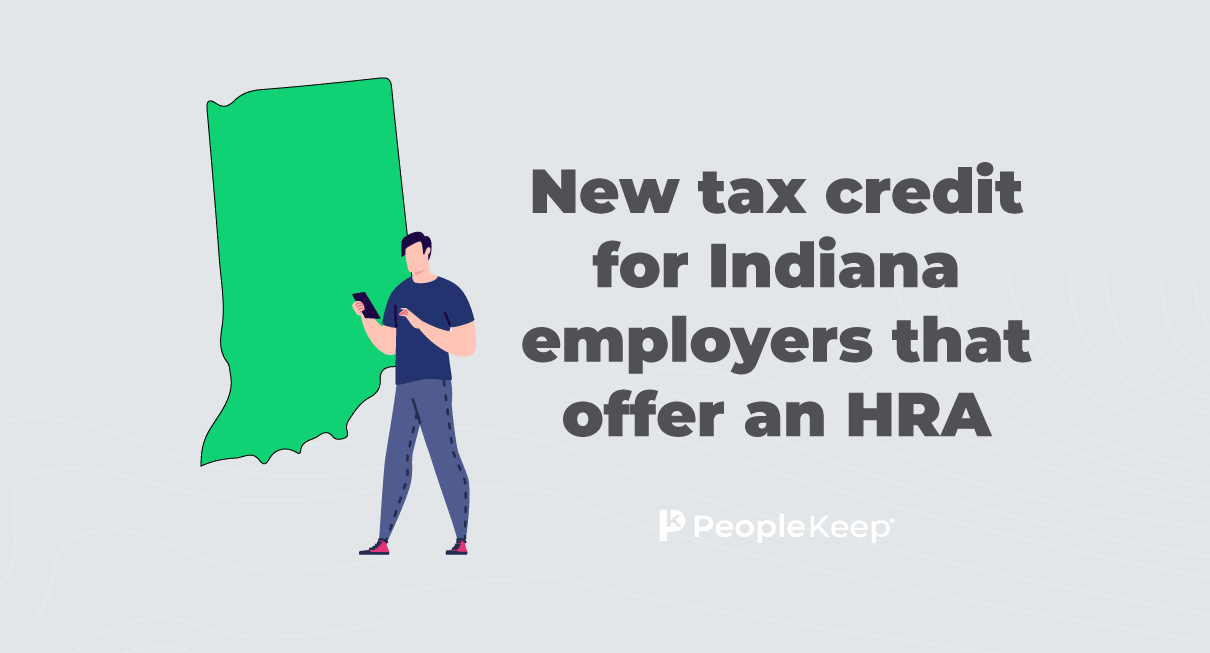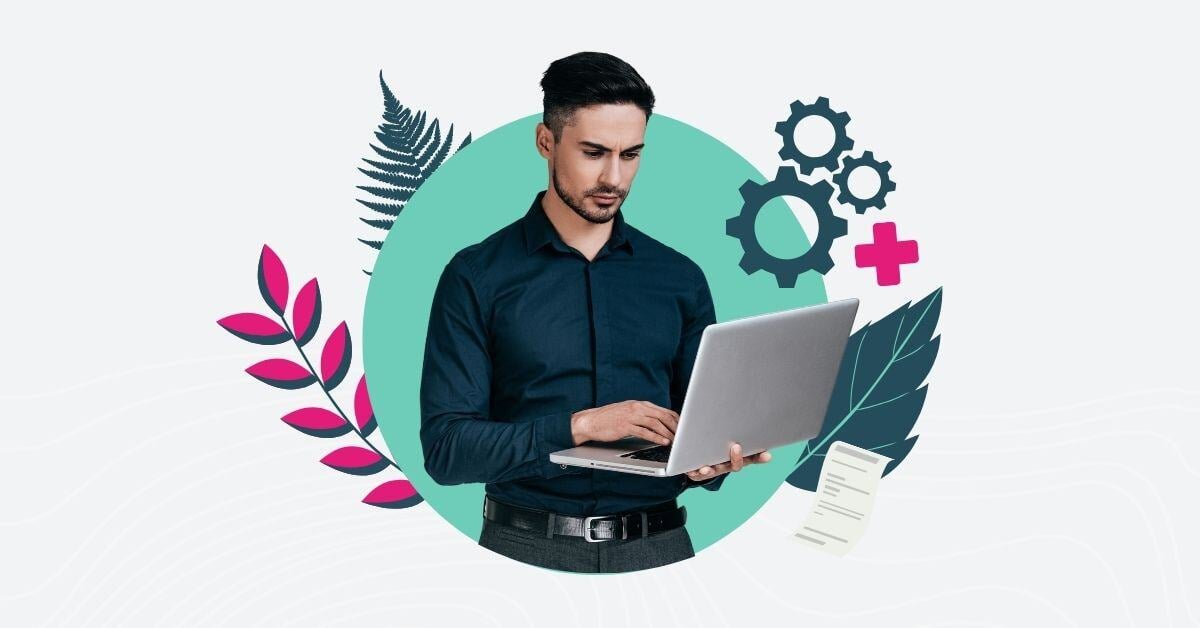Tax-free vs. tax-deferred vs. taxable health benefits
By Holly Bengfort on July 16, 2024 at 12:52 PM
According to our 2024 Employee Benefits Survey, 92% of employees rated health benefits as important. Offering them can help you effectively recruit and retain top talent at your organization.
However, navigating the complexities of health benefit offerings requires careful consideration and knowledge of the tax implications associated with each option. By understanding the key differences between tax-free, tax-deferred, and taxable health benefits, you can make informed decisions that benefit both your employees and your bottom line.
In this article, we'll go over each type of health benefit to help you make an informed choice for your company.
Takeaways from this blog post:
- One advantage of tax-free health benefits like an HRA is that you can provide a valuable benefit to your employees while reducing their tax rate.
- Similar to an employer-sponsored retirement plan, contributions to an HSA are tax-deductible, and the earnings grow tax-deferred.
- Taxable health benefits, like health stipends, count as part of an employee's taxable income, potentially putting them in a higher tax bracket.
What is a tax-free health benefit?
Tax-free health benefits are exactly what they sound like—benefits that aren't subject to federal taxes. This means that both the employer and the employee don't have to pay taxes on the contributions made toward the health benefit. Additionally, employer contributions to tax-free health benefits are also generally tax-deductible for the employer.
Offering tax-free health benefits can be a cost-effective way to provide valuable benefits to your employees while reducing their tax burden.
Common types of tax-free health benefits include the following:
- Health reimbursement arrangements (HRAs)
- Health savings accounts (HSAs)
- Flexible spending accounts (FSAs)
- Group health insurance (employer contributions)
Let’s review these options in more detail.
Health reimbursement arrangements
An HRA is an employer-funded health benefit you can use to reimburse your employees for more than 200 qualifying medical expenses. Depending on the type of HRA, this can include individual health insurance premiums. Reimbursements under an HRA are exempt from payroll taxes for employers. HRA allowances are also tax-free for employees.
HRAs are a smart choice for employers who can't afford traditional group health insurance plans, don’t meet minimum participation requirements, or want more flexibility. With an HRA, you reimburse your employees for their healthcare coverage instead of purchasing a group health plan for them. Plus, any unused funds stay with you at the end of the year and if an employee leaves your company.
Here are three of the most common HRAs:
- Qualified small employer HRA (QSEHRA): The QSEHRA is for small businesses and nonprofits with fewer than 50 full-time equivalent employees (FTEs). Employees need health plans that offer minimum essential coverage (MEC) to participate in a QSEHRA. The IRS sets annual limits on maximum contributions for the QSEHRA.
- Individual coverage HRA (ICHRA): The ICHRA is for employers of all sizes. Employers can differ allowances and benefit eligibility with 11 employee classes, such as full-time or part-time workers. ICHRAs have no maximum contribution limits, meaning you can offer as much as you’d like in allowances.
- Group coverage HRA (GCHRA): The GCHRA, also known as an integrated HRA, works as a supplement to your employer-sponsored plan. It helps employees afford out-of-pocket expenses your group plan doesn’t cover or fully pay for. Unlike the ICHRA and QSEHRA, you can't reimburse employees for health insurance premiums.
Health savings accounts
An HSA is one of the most common types of account-based health plans (ABHPs). With this benefit, employers can cover some or all of their employees’ healthcare expenses on a pre-tax basis.
You can open this tax-free account for your employees alongside an HSA-qualified high deductible health plan (HDHP). You and your employee can contribute to the HSA as long as your combined contributions don’t exceed the annual contribution limit. Employees 55 or older can also make an additional $1,000 catch-up contribution each year.
Regardless of how the HSA is set up, the individual employee always owns it. So if they leave your company, they take their HSA with them.
Flexible spending accounts
An FSA, also called a flexible spending arrangement, is a type of spending arrangement that allows employees to use tax-advantaged money for various eligible expenses.
The most popular type of FSA is a healthcare FSA, also called a medical FSA. With this medical reimbursement plan, employees can use pre-tax dollars to cover their qualifying medical costs. But unlike some HRAs, FSAs don't cover health insurance premiums.
Employees fund their FSAs through payroll deductions, and employers have the option to make contributions as well. When employees use this tax-free account for qualified expenses, they don't pay taxes on reimbursements from their employer.
Group health insurance
Group health insurance is also a tax-free health benefit. Employers make tax-free contributions toward premiums. The portion of the premium employees pay is also generally excluded from taxable income. This helps lower your employees’ taxable income if they pay their portion with pre-tax deductions.
What is a tax-deferred health benefit?
Chances are you already have a tax-deferred1 account as a retirement benefit, such as a 401(k) plan or a traditional individual retirement account (IRA). Contributing to one of these tax-deferred accounts lowers your taxable income for the year. This gives you immediate tax relief and reduces your current tax burden, which is helpful for those in a higher tax bracket than expected in retirement.
Tax-deferred health benefits work similarly to these retirement plans. Contributions aren't taxed when they're contributed but are taxed when they're withdrawn. This means that employees only pay taxes on the contributions made toward the health benefit once they withdraw the funds.
The major advantage of tax-deferred health benefits is that they allow individuals to defer taxes on contributions and potentially grow their benefits tax-free until they are used. An HSA is one example of a tax-deferred health benefit.
Health savings accounts
As mentioned earlier, an HSA is a popular tax-advantaged account. It’s unique since it offers triple tax advantages: an income tax deduction in the year of contribution, tax-deferred growth, and tax-free withdrawals for qualified expenses.
Withdrawals used to pay for qualified medical expenses for your employee, their spouse, and their dependents are never taxed. The interest they earn on the account accumulates over the years, and is tax-deferred.
Your employees can use HSAs as retirement savings vehicles to secure their financial futures. After 65, people can withdraw money just as they might their 401(k). Individuals must report any withdrawn funds they don’t use for medical expenses as income. People younger than 65 can also withdraw funds from an HSA for non-medical expenses. But they must pay both income tax and a 20% tax penalty for early withdrawal.
What are taxable health benefits?
Taxable health benefits are those that are subject to federal taxes. The biggest disadvantage of taxable health benefits is that they can increase an employee's taxable income, potentially leading to a higher tax liability. However, taxable benefits may still be worthwhile if they provide significant value or powerful incentives to your workers.
Examples of taxable health benefits include fringe benefits like employer-provided gym memberships, wellness programs, and health stipends.
Health stipends
With a taxable health stipend, you offer your employees additional money to cover their out-of-pocket medical expenses and health insurance premiums. Health stipends allow you to set monthly allowance caps, which gives you complete control over your benefits costs. However, unlike with an HRA, you can’t require employees to submit receipts or invoices for any of their purchases. This means there's no way of knowing if they spend their stipend on healthcare expenses. If you want to make sure your employees spend their money as intended, an HRA is a better, tax-free alternative.
How PeopleKeep can help you offer tax-free health benefits
If you're sold on the tax savings that HRAs provide, PeopleKeep makes it easy to offer one to your team. With our easy-to-use software, you can manage your health benefit in just minutes each month. Our experts conduct documentation reviews for all employee expenses, provide award-winning customer support, and generate federally required plan documents to ensure compliance and privacy. We're dedicated to handling the difficult, time-consuming tasks for you so you can focus on other aspects of your business.
Conclusion
As an employer, it's important to understand the differences between offering tax-free, tax-deferred, or taxable health benefits. By taking advantage of tax-free benefits when possible and being aware of the tax implications of tax-deferred and taxable benefits, you can provide valuable benefits to your employees while maximizing your savings.
Take advantage of the tax benefits and cost savings of an HRA with PeopleKeep.
PeopleKeep doesn't offer legal or tax advice. Consult a tax advisor, financial advisor, or HRA specialists to determine the best health benefit option for your current financial situation.
Check out more resources
See these related articles

New tax credit for Indiana employers that offer an HRA
Indiana employers can now take advantage of a new tax credit by offering health reimbursement arrangements (HRAs) to their employees instead of a group plan.

Offering stipends vs. salary increases
Employees increasingly desire added benefits and perks over yearly wage increases. But, what's the difference between stipends and salary increases?

How to set up an HRA
Learn how to set up an HRA for your business. Follow these steps to offer tax-free health reimbursements and provide flexible benefits to your employees.



